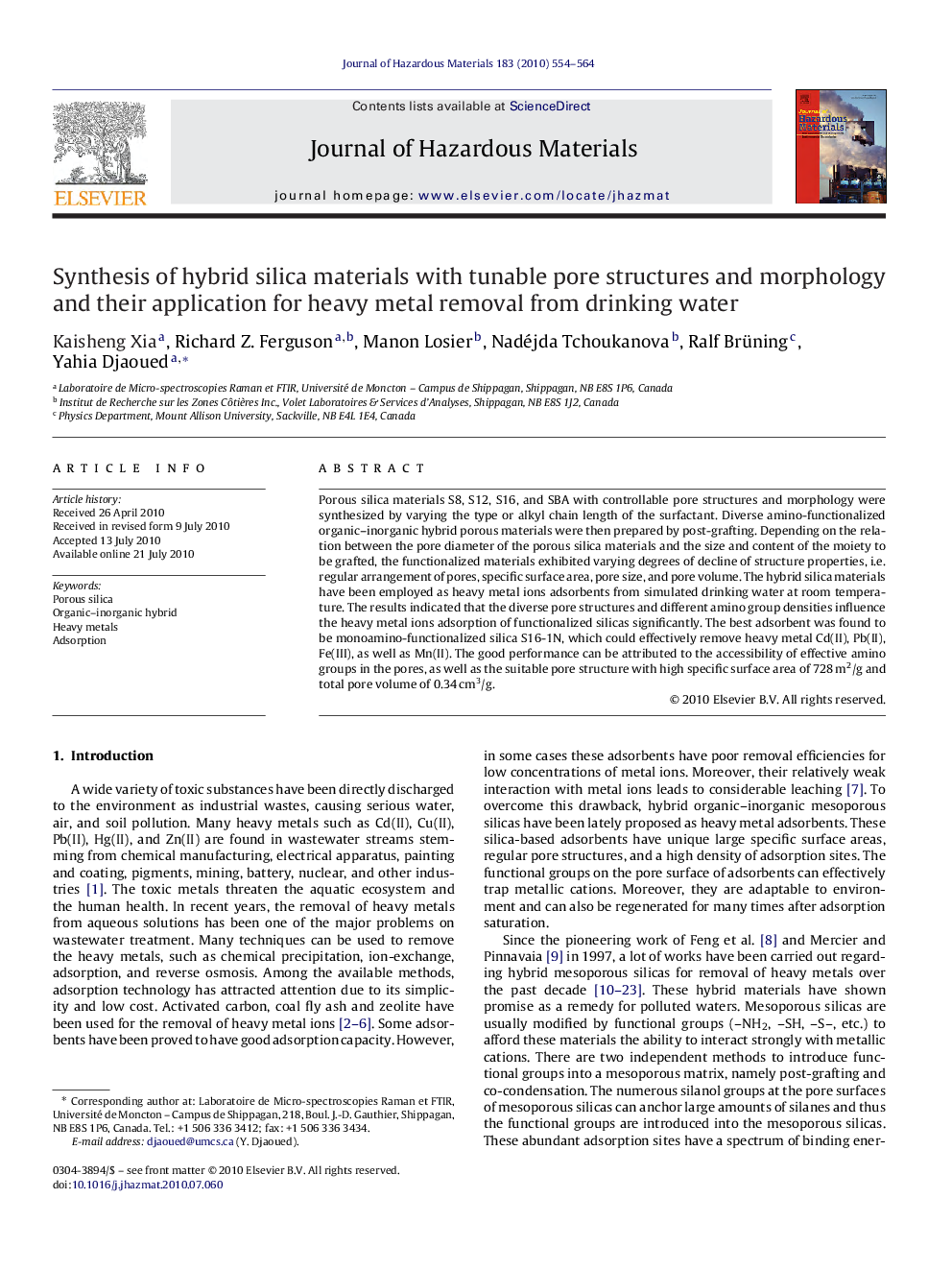| Article ID | Journal | Published Year | Pages | File Type |
|---|---|---|---|---|
| 579561 | Journal of Hazardous Materials | 2010 | 11 Pages |
Abstract
Porous silica materials S8, S12, S16, and SBA with controllable pore structures and morphology were synthesized by varying the type or alkyl chain length of the surfactant. Diverse amino-functionalized organic-inorganic hybrid porous materials were then prepared by post-grafting. Depending on the relation between the pore diameter of the porous silica materials and the size and content of the moiety to be grafted, the functionalized materials exhibited varying degrees of decline of structure properties, i.e. regular arrangement of pores, specific surface area, pore size, and pore volume. The hybrid silica materials have been employed as heavy metal ions adsorbents from simulated drinking water at room temperature. The results indicated that the diverse pore structures and different amino group densities influence the heavy metal ions adsorption of functionalized silicas significantly. The best adsorbent was found to be monoamino-functionalized silica S16-1N, which could effectively remove heavy metal Cd(II), Pb(II), Fe(III), as well as Mn(II). The good performance can be attributed to the accessibility of effective amino groups in the pores, as well as the suitable pore structure with high specific surface area of 728Â m2/g and total pore volume of 0.34Â cm3/g.
Related Topics
Physical Sciences and Engineering
Chemical Engineering
Chemical Health and Safety
Authors
Kaisheng Xia, Richard Z. Ferguson, Manon Losier, Nadéjda Tchoukanova, Ralf Brüning, Yahia Djaoued,
